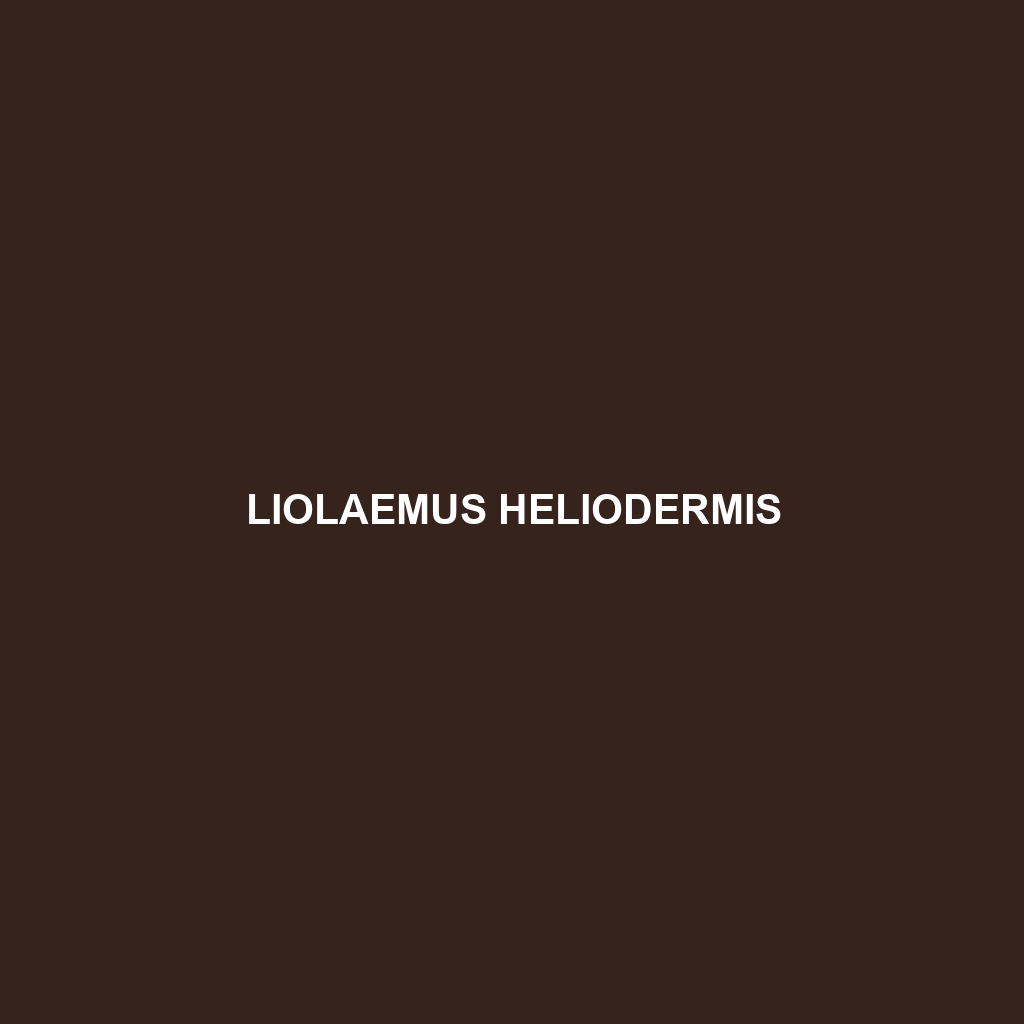Common Name
Liolaemus heliodermis
Scientific Name
Liolaemus heliodermis
Habitat
Liolaemus heliodermis is primarily found in the temperate forests and grasslands of South America, particularly in regions of Chile and Argentina. This species enjoys a variety of habitats, ranging from moist, shaded areas beneath dense tree canopies to more open savanna-like environments with minimal tree coverage. The typical geographic regions are characterized by moderate to high rainfall, supporting lush vegetation. The climate here is generally temperate, albeit influenced by surrounding maritime conditions, which contribute to a unique biodiversity in these ecosystems. As a result, Liolaemus heliodermis thrives in diverse environments, showcasing adaptability across different ecological niches.
Physical Characteristics
Liolaemus heliodermis is a medium-sized lizard exhibiting distinctive features that aid in its identification. Adults typically measure between 10 to 15 centimeters in length. They possess a robust body with smooth scales that are generally brown or gray, often marked with unique patterns of lighter accents that can mimic the surrounding flora, providing effective camouflage. A particularly intriguing characteristic include their elongated, flat tails which aid in balance and navigation in their varied habitats. The coloration can vary significantly between individuals, enhancing their ability to adapt to different environmental conditions.
Behavior
Behaviorally, Liolaemus heliodermis showcases some fascinating patterns. These lizards are primarily diurnal, spending much of the day basking in the sun to regulate their body temperature. During the mating season, which typically occurs in the late spring, males engage in vibrant displays and territorial behaviors to attract females. Social interactions can vary, with some individuals displaying aggressive posturing towards intruders within their territory. Notably, Liolaemus heliodermis exhibits unique hibernation patterns during colder months, retreating to burrows or sheltered areas to escape extreme weather, making them highly adaptable to seasonal changes.
Diet
Liolaemus heliodermis is categorized as an insectivore, primarily feeding on various insects and small invertebrates that inhabit its environment. The diet typically includes ants, beetles, and grasshoppers, with individuals employing agile movements to capture prey. The lizard has been observed actively foraging during the day, utilizing keen eyesight to find food. Occasionally, Liolaemus heliodermis may also consume plant matter, which suggests a slight omnivorous tendency in their broader diet, although this remains a secondary behavior.
Reproduction
The reproductive cycle of Liolaemus heliodermis is marked by a fascinating series of rituals. Mating typically occurs during the warmer months, with gestation periods lasting roughly 60 to 70 days. Females lay clutches of four to eight eggs in hidden burrows or under rock crevices to safeguard them from predators. Interestingly, parental care is not exhibited in this species, as the hatchlings are independent upon emergence, showcasing survival instincts from an early age. This reproductive strategy emphasizes the resilience of Liolaemus heliodermis in adapting to its environment.
Conservation Status
The current conservation status of Liolaemus heliodermis is considered of “Least Concern”; however, various challenges threaten its habitat. Urbanization, agriculture, and deforestation have led to habitat fragmentation, posing risks to the population. Conservation efforts are underway to monitor their populations and mitigate habitat loss through environmental protection initiatives. Continued research is essential to ensure this unique species remains abundant in its natural environment.
Interesting Facts
One particularly interesting fact about Liolaemus heliodermis is its ability to change coloration to blend in with its surroundings, a camouflage technique that aids immensely in evading predators. Additionally, during mating season, males can display intricate courtship dances involving head bobbing and tail waving, which can be quite a spectacle. Another noteworthy adaptation is their excellent climbing skills; these lizards are often found perched on low branches or rocks, showcasing their versatility in both arboreal and terrestrial habitats.
Role in Ecosystem
Liolaemus heliodermis plays an essential role in its ecosystem as both a predator of various insects and as prey for larger wildlife. By regulating insect populations, these lizards contribute to maintaining ecological balance. Their presence in the food web highlights their importance, acting as a food source for birds and mammals within the environmental chain. Additionally, their burrowing activities can aerate soil, promoting healthier plant growth, thus enhancing biodiversity. By maintaining this delicate balance, Liolaemus heliodermis underscores the significance of every species within its ecosystem.
